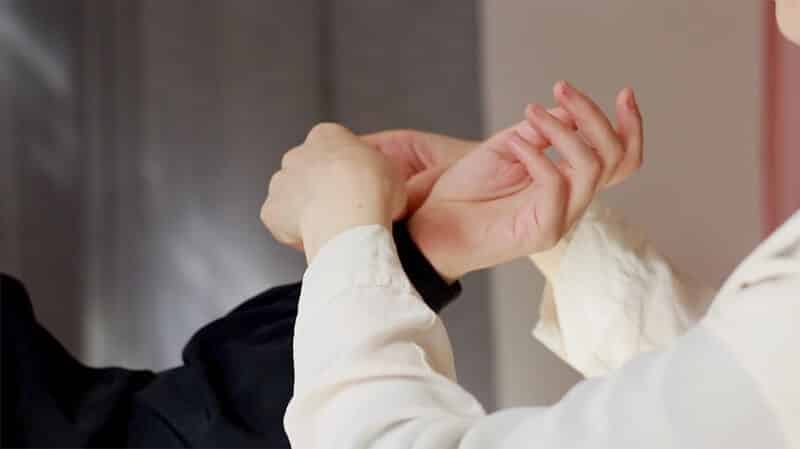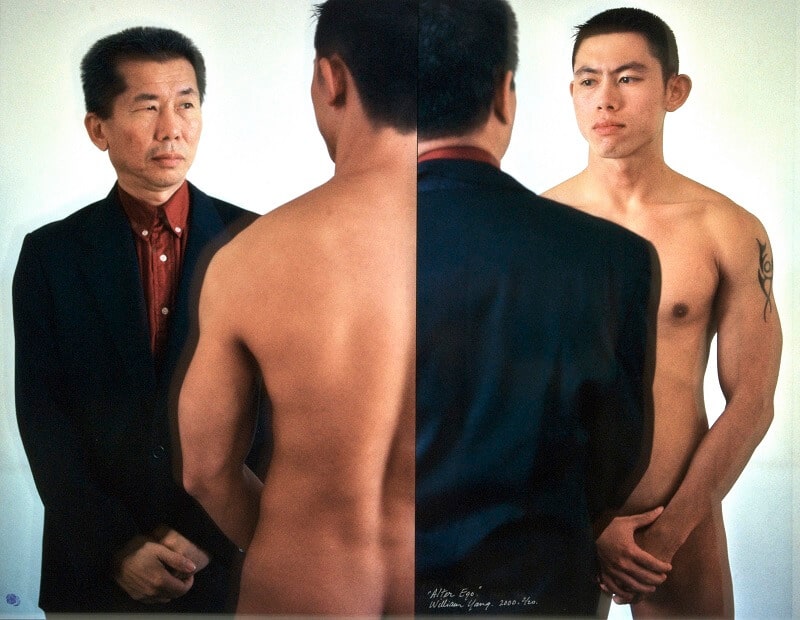‘The Other Portrait’ engages two Sydney University campus art spaces – UTS Gallery and SCA Gallery – in a unique cross-site conversational art experience exploring artist perspectives on body representation and the self. The exhibition, which is co-curated by Julie Rrap, Associate Professor, Acting Director and Chair, Sydney College of the Arts, and Cherine Fahd, Associate Professor, Faculty of Design, Architecture and Building, UTS, brings intimate expressions of the self as ‘one and other’ into the public realm across photographic pairings, sculpture and screen-based media works presented as doubles or mirrored reflections.
While the two University campuses are temporarily closed, you can go online and see some of the works on display via a slideshow of images on the UTS Gallery website. Click here. We hope you can make it in person post lockdown, the exhibition is on until 23 July.

With a focus on the concept of ‘doubling’, co-curators Rrap and Fahd, who are also participating artists in the show, together present a showcase of newly commissioned artworks in two-parts by leading contemporary Australian artists – Cigdem Aydemir, William Yang, Sara Oscar, Ronnie van Hout, Simon Cooper, Patrick Pound and sisters Gabriella and Silvana Mangano, – whose artistic practices are informed by the traditions of portraiture, who also explore body representation, and the complexities of identity and the individual.
In the conversation below, artist and co-curator Julie Rrap discusses the curatorial premise for the exhibition, and shares insight about some of the artists commissioned to make work as part of ‘The Other Portrait’, and reflects on the collaborative artworks that she and Fahd created for this show.
“In thinking about this concept of The Other Portrait, Cherine and I were discussing the ubiquitous nature of the portrait in contemporary life if you include selfies on social media etc. but in fact the notion of the portrait within Western Art is defined by a tradition that often celebrates power and influence. Something like the Archibald prize is a very parochial example of that tradition. Although we didn’t in any way plan for our exhibition to be on at the same time as the Archibald it is interesting that it coincides.”
“Splitting the show across two venues as a conceptual device was again fortuitous as Cherine and I work at different institutions… UTS and SCA at USYD. To bring the idea of the Other into the discussion was well served by creating a conversation in which artists were invited to consider this strategy when making their work for two spaces.”

Why did you decide on these particular artists for the exhibition? Some were artists we had always discussed such as the Mangano Twins because their work for many years has elaborated on their relationship as identical twins in very beautiful and fascinating video and object-based works. Ronnie van Hout was also an obvious choice, he has worked for many years with notions of the self and masquerade in which ‘Ronnie’ is both himself and someone else, often as a figure within a favourite film etc. I find his work both humorous and melancholy in these depictions. We also liked the way he worked with video and sculpture in much of his work so that the ‘portrait’ is not confined to any one medium.
William Yang was also an important choice as someone who has worked as a photographer of both others and himself for many years, in which, he doesn’t distinguish between his own search for cultural identity and the stories that surround both his life and that of his friends. This intermingling creates fascinating crossovers between his community as a gay man and that of his Chinese origins. Cigdem Ademir who identifies as a Muslim woman has also made work for some years identifying but questioning the stereotypical ways in which her ‘portrait’ is depicted culturally. There is always a gentle and often ironic challenge in the ways in which her work approaches these representations.
Simon Cooper has for many years created wonderful photographic and video works which explore his sense of self through what he describes as communication with persons ‘other-than-human’. This investigation has been stimulated over many years through his travels mostly within Asian cultures in which trance and possession states are part of cultural rituals in those countries. He activates notions of animism within a contemporary art context rather than an ethnographic one. Sara Oscar has a mixed cultural heritage as her father was born in India. She transposes herself into images of her father who was obsessed with body building. She creates fascinating montages in which her more youthful female poses collide with his masculine ones.

In your arts practice you have an ongoing interest in representations of the body, which you bring to visualisation through photography, painting, video, sculpture and performance. Tell us about the work you have made for this exhibition? Cherine and I have wanted to collaborate on work together for sometime and this exhibition offered us an opportunity to do that. We felt that taking the concept of ‘The Other Portrait’ as a reflection one another’s practice provided an interesting mirroring device. Using the right and left sides of our faces mirrored created a first step in which the idea of the ‘other’ is a perfect reflection of the exhibition rationale. Give and Take was a video performance work that created another way of working across the two spaces; in one work Cherine undresses to cover my nudity and in the other space I undress to cover her nudity. The work is represented through a very diffuse image that almost appears like a dream sequence in which certain moments in the ritual of undressing/dressing suddenly pop into focus as our bodies come into focus before the gaze of the camera. This collaboration with Cherine really is a great coming together of our practices. It also seemed logical that as co-curators of The Other Portrait that we could use collaboration as a reflection of the ideas we were hoping to explore.
“Mirroring and doubling are central elements of The Other Portrait and I think all the work in the exhibition reflects these notions in imaginative and challenging ways.” – Julie Rrap
‘The Other Portrait’ is on view across UTS Gallery and SCA Gallery until 23 July. The galleries are within close walking distance and can easily be explored in one outing. Don’t forget to pick up an exhibition catalogue to read more about the show in Rachel Kent’s essay.